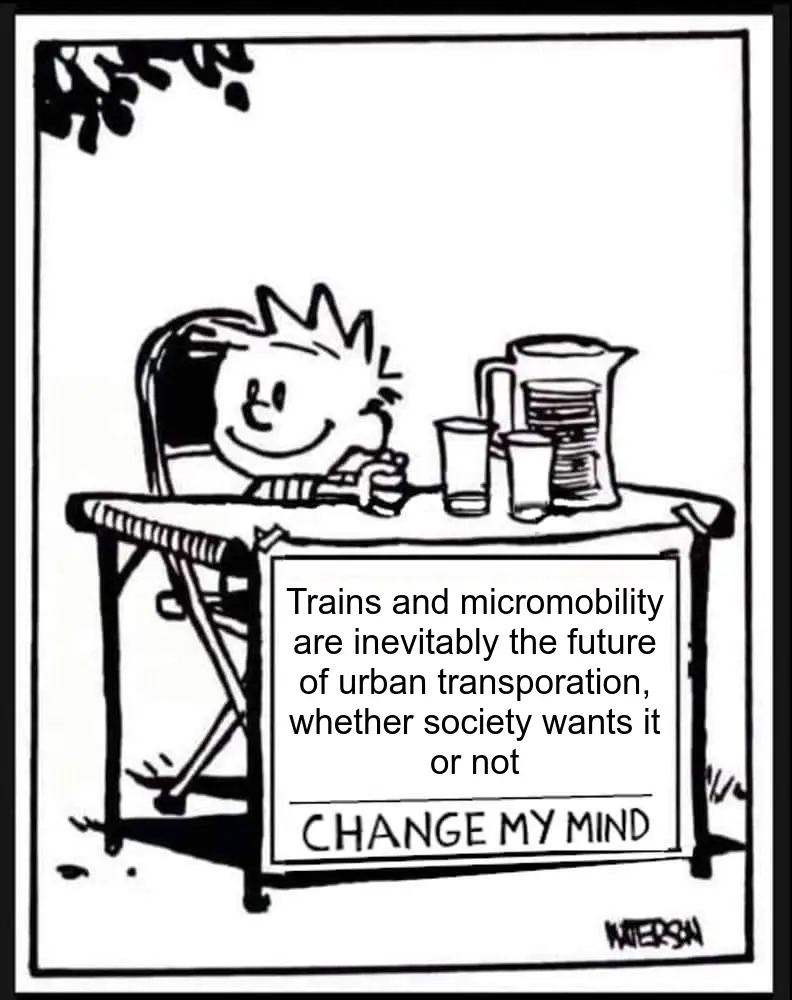Fuck Cars
A place to discuss problems of car centric infrastructure or how it hurts us all. Let's explore the bad world of Cars!
Rules
1. Be Civil
You may not agree on ideas, but please do not be needlessly rude or insulting to other people in this community.
2. No hate speech
Don't discriminate or disparage people on the basis of sex, gender, race, ethnicity, nationality, religion, or sexuality.
3. Don't harass people
Don't follow people you disagree with into multiple threads or into PMs to insult, disparage, or otherwise attack them. And certainly don't doxx any non-public figures.
4. Stay on topic
This community is about cars, their externalities in society, car-dependency, and solutions to these.
5. No reposts
Do not repost content that has already been posted in this community.
Moderator discretion will be used to judge reports with regard to the above rules.
Posting Guidelines
In the absence of a flair system on lemmy yet, let’s try to make it easier to scan through posts by type in here by using tags:
- [meta] for discussions/suggestions about this community itself
- [article] for news articles
- [blog] for any blog-style content
- [video] for video resources
- [academic] for academic studies and sources
- [discussion] for text post questions, rants, and/or discussions
- [meme] for memes
- [image] for any non-meme images
- [misc] for anything that doesn’t fall cleanly into any of the other categories
Recommended communities:
view the rest of the comments

Trains(international and intercity), metro(across the city) and trams(across the city) - all of them use same wheels. They are not that different.
*(here personal transport excludes everything that is not a car)
Maintanance is most expensive part of car infrastructure. At least between those that directly paid.
Wheels are 100% different on Heavy Rail, Metros and Light Rails.
In addition to that all 3 have different requirements for curves, runout and grades.
Source: my employer makes all 3.
Wheels mostly not. Though bogies for LR and everything else are very different.
And by wheel I mean steel disc, not breaking system, not suspension, not everything else.
A lot of light rail uses resilient wheels and heavy rail does not.
Wheel profiles (the shape of the part that actually touches the rail) are also very different between different categories.
Huh. Today I learned.
Metrolink in California does really well though, even with everything you described above.
Metrolink, and the subway system in Los Angeles, shows that it is doable and within cost.